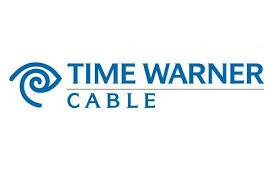http://streamingradioguide.com/blogradio/?p=1506
According to the Wall Street Journal, Citadel/ABC hired a large firm on June 4th to deal with “restructuring” its debt, so this may be approaching more than hypothetical status…
Let’s say hypothetically that any one of the top 5 largest Radio Owners fails and files for Chapter 11 bankruptcy. What would happen next?
There are people who specialize in managing radio stations while the owners are in the bankruptcy process (or when a sole proprietor dies suddenly). Typically radio bankruptcies involve “mom and pop” local radio stations, not big conglomerates.
When a radio station folds, it often goes silent for a while and the FCC is notified and the license is transferred to the debtor in possession – but banks are not qualified to operate a radio station, so the FCC wants to know that someone who knows the FCC regulations is running the station.
To keep the FCC license from lapsing, the bankruptcy court hires someone to run the station until the license can be disposed of – which generally means little more than playing automated or satellite fed music for months. The objective is to spend as little money as possible until a new owner for a station is found, often times by auctioning off the assets.
But what would happen if an owner with 100 or more radio stations and 1,000s of employees closes its doors suddenly? This has serious national security implications (that’s not hyperbole).
As long as most of us have been alive, we’ve heard Emergency Broadcast System messages on Radio and TV doing tests to warn us in event of an “actual emergency”. EBS was renamed EAS a few years ago.
The basic principle of the EAS is that every radio, TV station, and Cable TV system are required to have an EAS decoder connected to their transmitter equipment. The EAS device is pre-configured to “listen” to one or more EAS Primary Entry Point (PEP) stations for national messages, and local relay stations (LP1 and LP2) - and if the appropriate signals are received, the EAS message takes over control of the radio, TV stations unilaterally. The station has no discretion in the matter on national messages. If you want to read more about EAS, here is the EAS Page at the FCC Website.
In June of 2007, there was an accidental activation of the real doomsday facility in the Chicago area – announcing that a White House spokesperson was about to address the country. [TV coverage and report here]
In this case, the LP1 station was WGN-AM (The owner of WGN is currently in bankruptcy, but WGN is their only radio station and the bankruptcy is proceeding in an orderly manner).
What if one or more of the really big radio owners fails? In order to protect the operations of the EAS, the failed company’s radio stations cannot be allowed to “go dark”, even temporarily – and must remain staffed 24 hrs/day with someone familiar with the EAS procedures and equipment (that’s an EAS requirement). Could this become the pretext for a government seizure of some radio stations in the interest of national security?
The EAS system is based on 34 PEP (Primary Entry Point) stations that feed every station in its area (typically an old 50 kw legacy AM station). The government is adding more PEPs so eventually there will be one in every state (but waiving the requirement that they have a fallout shelter). The AM PEPs being directional at night starting in 1986 also impairs their ability – PEPs can broadcast non-directional at night during an emergency if someone knows how to turn on the daytime settings at night… The brand new 50 kw station near Fargo, ND did exactly that during 2009’s Spring floods.
Here is the requirement to be a PEP, dating back to the 1960s and “duck and cover”…
Diesel backup generator with fuel sufficient for 30 days of continuous broadcasting without commercial power
Landline, satellite, and HF radio connectivity to FEMA OperationCenters
Special EAS Encoder/Decoders (ENDECs) with unique EAS codes
Generally located just outside of major city area for survivability
Fallout shelter, on-site food, and special lightning protection
Here is the list of PEPs as of 2001:
PEP Station Location Owner
KALL (AM) HERRIMAN UT Sports Capital Partners
KBOI KUNA ID
Citadel
KCBS NOVATO CA
CBS
WHB (AM) KANSAS CITY KS Union Broadcasting
KERR (AM) POLSON MT Anderson Broadcasting
KFLT TUCSON AZ Family Life
KFQD ANCHORAGE AK Morris
KFYR (AM) MENEKEN ND
Clear Channel
KIRO VASHON WA Bonneville
KKOB ALBUQUERQUE NM
Citadel/ABC
KKOH RENO NV
Citadel/ABC
KOA PARKER CO
Clear Channel
KTRH DAYTON TX
Clear Channel
KTWO (AM) CASPER WY GAP Broadcasting
WABC (AM) New York
Citadel/ABC
WBAP MANSFIELD TX
Citadel/ABC
WBAL Baltimore Hearst
WBZ Boston
CBS
WCCO Minneapolis/St Paul
CBS
WHAM (AM) Rochester, NY
Clear Channel
WLS (AM) Chicago
Citadel/ABC
WLW (AM) Cincinatti
Clear Chanel
WMAC MACON GA Cumulus
WQDR FM Raleigh, NC Carolina Media Group
WRXL FM RICHMOND VA
Clear Channel
WSM Nashville Grand Ole Opry
WSTA ST THOMAS, VI Ottley Communications
WTAM (AM) Cleveland
Clear Channel
WWL New Orleans Entercom
WYGM (former WQTM) CLERMONT FL
Clear Channel
WKAQ CATANO PR Univision
WCOS FM COLUMBIA SC
Clear Chanel
KFWB LOS ANGELES CA
CBS
As more people began to watch Cable TV or satellite TV instead “over the air” TV, Cable TV and DirecTV systems were also brought under the control of EBS. If you’re watching HBO, you still need to know that a tornado warning has been issued or that North Korea has just launched a nuclear missile.
In addition to the 34 PEPs, each state has a local Network consisting of LP1 and LP2 stations that allow the Governor of a state to alert people in his/her state.
The EAS system is further being expanded as part of thing called IPAWS, which will enable FEMA to do things like have sign language video messages for those who are deaf.
I’m going to start adding an EAS logo to those stations that are PEPs or LPs so that in the event the EAS doesn’t function as intended some day, you may be able to find a stream carrying a nationwide alert should the unthinkable happen some day. Hopefully your internet service remains up.
Big Radio’s Owners
This collection of information was started in May 2009, and now covers most of the major radio station owners. The primary source of information is the FCC’s ownership reports, supplemented by information from the owner’s web site and other media reports.
License count are approximate AM and FM radio license counts – no LPFM or FM Translators are included. The numbers also do not include TV stations.
Defining what “Biggest” means in radio is something that has no single answer. Is it the most number of licenses? Presence in the largest number of major markets? Income? Profits? Employees? Ratings? To people in the radio business, this is a religious issue – and I’m not in the radio business.
For our purpose, “Biggest” means the largest number of Full power licensed stations. It’s not a very good measure, but it is something that can be directly determined from FCC records.
Most of the companies in this list have suffered huge losses from declines in the value of radio station licenses in the past 5 years. Any investment in a company that owns radio stations is highly speculative, and should not be done without advice and extensive research done by a trained professional.
LMAs
To understand radio “Bigness”, you first need to understand what an LMA (Local Marketing Agreement) is. Back in the good old days of heavy regulation, an LMA was used to circumvent the intent of the FCC ownership limits.
The LMA is an agreement to Lease a radio station to another party without actually transferring the ownership of the license.
If a “Too big for the limits” owner wanted to take “control” of another station in the market, they would enter into an LMA with the current owner. The original license holder would retain the license and the legal responsibility for the station, but effectively the station would be run by the Big Company. The FCC eventually closed that loophole, so when the Big company controls another station via an LMA today, that station counts against their limits.
Since those limits are now much less restrictive and the LMA loophole was closed, the main use of the LMA today is for temporary control of a station while a sale is pending. The New Owner is given effective control of the station (programming, personnel, operations) while the FCC approves the transfer (or not), and the lawyers and bankers finish up the paperwork and transfer of assets.
LMAs are also used when the station owner doesn’t have the interest, ability or desire to continue to operate a station. The station owner turns over control of the station to a regional or national programmer (often a religious programmer like Salem or Moody Bible) and the station remains owned by the original owner – but effectively becomes part of the larger network. Generally this seems to be done for tax or estate planning reasons when the station’s owner has no children who want to carry on the family business.
A recent development in the use of an LMA is to technically comply with Section 310 of the FCC rules requiring radio stations to have no more than 20% non-citizen (United States citizen) ownership (or 25% of a radio holding company).
A company in Mexico recently “acquired” control of a major radio station in Los Angeles via a long term LMA agreement, where that company from Mexico will run the station – on paper, the station is still owned by an American Company, but for all practical purposes it was “sold”.
Commercial Radio Operators as of May 8, 2009
(Total # licenses = 14,311)
Owner #Licenses(approx)
Clear Channel 851
Aloha Station Trust
(Divested CC Stations) 42
GAP Broadcasting
(Former CC Stations) 116
Cumulus 327
Citadel 227
CBS Radio 136
Entercom 109
Cox Radio 85
Saga Radio 69
Cherry Creek 64
Regent
Communications 62
Univision (Spanish) 54
Radio One 51
Nassau 51
Three Eagles 50
Entravision 48
BiCoastal 49
NRG Media 44
Salem Broadcasting 44
Beasley Broadcasting 44
Midwest
Communicaations 42
Disney 38
Forever 37
NextMedia 36
New Northwest 36
Journal
Broadcasting 35
Morris
Communications 34
6 Johnson Road
(Pamal) 34
Mapleton 34
Monterey 33
Backyward 30
Bonneville 29
Emmis 22
American General 22
Tags: EAS, EBS, National Security

























 By the mid 1970s, WPIX was the clear number-two independent station in the city, behind WNEW-TV. It identified on-air as 11 Alive from September 1977 to 1986, a slogan made popular by stations like
By the mid 1970s, WPIX was the clear number-two independent station in the city, behind WNEW-TV. It identified on-air as 11 Alive from September 1977 to 1986, a slogan made popular by stations like 



